-
 Bitcoin
Bitcoin $116800
1.37% -
 Ethereum
Ethereum $3832
5.15% -
 XRP
XRP $3.063
2.69% -
 Tether USDt
Tether USDt $1.000
0.04% -
 BNB
BNB $774.1
0.84% -
 Solana
Solana $170.7
1.56% -
 USDC
USDC $0.0000
0.01% -
 Dogecoin
Dogecoin $0.2142
5.31% -
 TRON
TRON $0.3406
1.90% -
 Cardano
Cardano $0.7635
3.81% -
 Hyperliquid
Hyperliquid $39.55
2.42% -
 Sui
Sui $3.732
7.71% -
 Stellar
Stellar $0.4127
4.25% -
 Chainlink
Chainlink $17.80
6.91% -
 Bitcoin Cash
Bitcoin Cash $576.7
1.66% -
 Hedera
Hedera $0.2521
3.28% -
 Ethena USDe
Ethena USDe $1.001
0.01% -
 Avalanche
Avalanche $22.66
2.19% -
 Litecoin
Litecoin $121.3
2.98% -
 UNUS SED LEO
UNUS SED LEO $8.959
-0.31% -
 Toncoin
Toncoin $3.325
2.88% -
 Shiba Inu
Shiba Inu $0.00001263
2.84% -
 Uniswap
Uniswap $10.11
4.79% -
 Polkadot
Polkadot $3.769
3.22% -
 Dai
Dai $1.000
0.01% -
 Bitget Token
Bitget Token $4.413
1.46% -
 Monero
Monero $272.9
-4.98% -
 Cronos
Cronos $0.1488
4.22% -
 Pepe
Pepe $0.00001088
4.01% -
 Aave
Aave $273.0
4.73%
How to set KuCoin contract's position automatic stop loss? Can it be adjusted according to volatility?
Setting up an automatic stop loss on KuCoin is essential for risk management in futures trading, and while it can't adjust automatically to volatility, traders can manually tweak it.
May 07, 2025 at 04:07 am
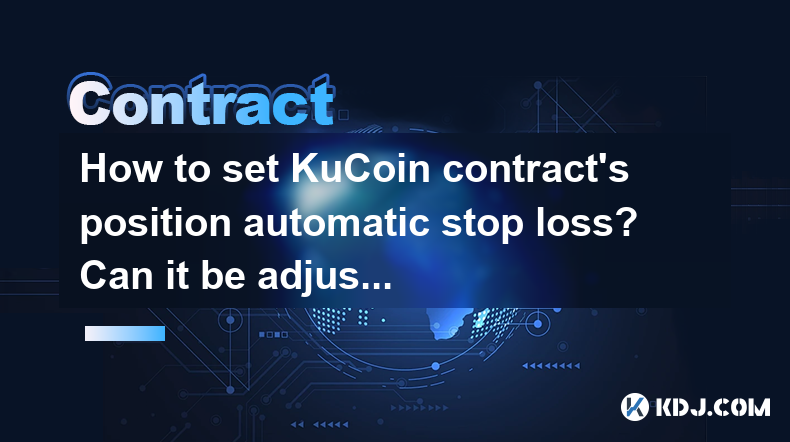
Setting up an automatic stop loss for your positions on KuCoin's futures trading platform is a crucial risk management tool that can help protect your investments from significant losses. This article will guide you through the process of setting up an automatic stop loss on KuCoin and explore whether these stop losses can be adjusted according to market volatility.
Understanding KuCoin Futures and Stop Loss
KuCoin Futures is a platform where traders can engage in futures contracts, allowing them to speculate on the future price of cryptocurrencies. A stop loss is an order type that automatically closes a position when the price reaches a specified level, helping to limit potential losses. On KuCoin, you can set up a stop loss to manage your risk effectively.
Setting Up an Automatic Stop Loss on KuCoin
To set up an automatic stop loss on KuCoin, follow these steps:
- Log into your KuCoin account and navigate to the futures trading section.
- Select the futures contract you want to trade. Ensure you are on the correct trading pair.
- Open a position by either going long or short on the selected futures contract.
- Click on the position you just opened to view its details.
- Locate the 'Stop Loss' section. Here, you will see an option to set a stop loss price.
- Enter the desired stop loss price. This is the price at which you want your position to be automatically closed to limit losses.
- Confirm the stop loss order. Once set, the stop loss will be active until you close the position or modify the stop loss.
Adjusting Stop Loss According to Volatility
KuCoin does not offer a direct feature to automatically adjust stop loss levels based on market volatility. However, traders can manually adjust their stop losses in response to changes in market conditions. Here’s how you can do it:
- Monitor market volatility using tools like the Average True Range (ATR) or Bollinger Bands. These indicators can help you gauge the current volatility of the market.
- Adjust your stop loss based on the volatility levels. For instance, if volatility increases, you might want to set a wider stop loss to avoid being stopped out by normal market fluctuations.
- Regularly review and update your stop loss levels. As the market moves, you may need to adjust your stop loss to ensure it remains effective.
Using Trailing Stop Loss on KuCoin
KuCoin also offers a trailing stop loss feature, which can be useful in volatile markets. A trailing stop loss moves with the market price, allowing you to lock in profits while still protecting against significant losses. Here’s how to set it up:
- Open your position and navigate to the 'Stop Loss' section.
- Select 'Trailing Stop Loss' instead of a fixed stop loss.
- Set the trailing amount as a percentage or a fixed value. This determines how far the stop loss will trail the market price.
- Confirm the trailing stop loss. The stop loss will now move with the market, adjusting automatically to lock in gains.
Practical Tips for Managing Stop Losses
Effective management of stop losses requires a strategic approach. Here are some tips to help you use stop losses more effectively on KuCoin:
- Set stop losses based on your risk tolerance. Consider how much you are willing to lose on a trade and set your stop loss accordingly.
- Use technical analysis to identify key support and resistance levels. Setting stop losses just below support levels can help you avoid being stopped out prematurely.
- Avoid setting stop losses too tight. In highly volatile markets, a tight stop loss can result in being stopped out before the market moves in your favor.
- Consider using multiple stop loss orders. For larger positions, you might want to set multiple stop losses at different levels to manage risk more effectively.
Common Mistakes to Avoid
When setting up and managing stop losses on KuCoin, it’s important to avoid common pitfalls that can undermine your trading strategy:
- Setting stop losses too close to the entry price. This can lead to being stopped out by normal market fluctuations.
- Ignoring market volatility. Failing to adjust stop losses in response to changes in volatility can result in unnecessary losses.
- Not reviewing and updating stop losses. As the market moves, your stop loss levels may need to be adjusted to remain effective.
- Over-relying on stop losses. While stop losses are a valuable tool, they should be used as part of a broader risk management strategy.
Frequently Asked Questions
Q: Can I set a stop loss on KuCoin without opening a position first?
A: No, you must open a position before you can set a stop loss on KuCoin. The stop loss is tied to an existing position and cannot be set independently.
Q: Does KuCoin charge any fees for using stop loss orders?
A: KuCoin does not charge additional fees specifically for using stop loss orders. However, standard trading fees apply when the stop loss order is executed.
Q: Can I set a stop loss on KuCoin mobile app?
A: Yes, you can set a stop loss on the KuCoin mobile app. The process is similar to the web version, where you navigate to your open position and set the stop loss in the position details section.
Q: Is it possible to set a stop loss that triggers only during certain times of the day?
A: No, KuCoin does not offer time-specific stop loss orders. Stop loss orders are active as long as the position is open, regardless of the time of day.
Disclaimer:info@kdj.com
The information provided is not trading advice. kdj.com does not assume any responsibility for any investments made based on the information provided in this article. Cryptocurrencies are highly volatile and it is highly recommended that you invest with caution after thorough research!
If you believe that the content used on this website infringes your copyright, please contact us immediately (info@kdj.com) and we will delete it promptly.
- Ripple, Rail, and Stablecoin Payments: A $200M Power Play
- 2025-08-07 22:50:12
- Punisher Coin Presale: The Next $Trump? Aiming for 100x Gains!
- 2025-08-07 22:50:12
- Riding the Crypto Wave: Presale Cryptos, Cold Wallets, and the BTC Bull Run
- 2025-08-07 23:10:12
- Crypto's Wild Ride: Punisher Coin, Popcat, and the Meme Coin Mania
- 2025-08-07 23:10:12
- Bitcoin Price, XRP Prediction, Cryptocurrency: Navigating the Wild West of Digital Assets
- 2025-08-07 23:15:12
- WiMi, Quantum Computing, and AR Tech: Navigating the Future Today
- 2025-08-07 22:30:12
Related knowledge
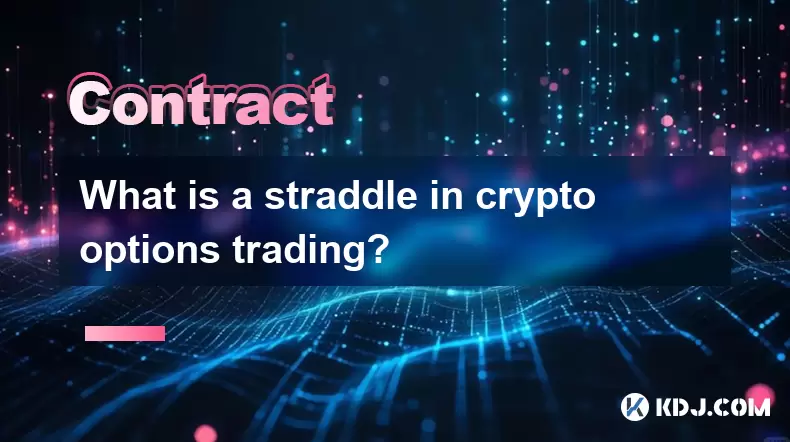
What is a straddle in crypto options trading?
Aug 07,2025 at 11:15pm
Understanding the Basics of a Straddle in Crypto OptionsA straddle is an options trading strategy used when a trader expects significant price movemen...
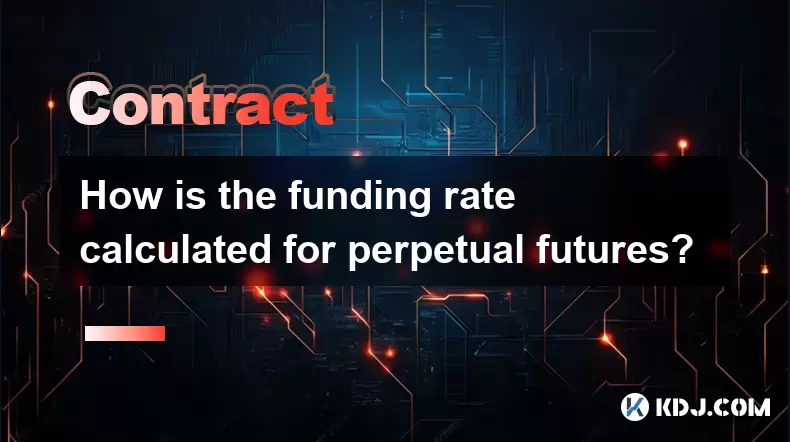
How is the funding rate calculated for perpetual futures?
Aug 07,2025 at 11:36pm
Understanding the Basics of Perpetual FuturesPerpetual futures are a type of derivative contract that does not have an expiration date, allowing trade...

What programming languages are used for smart contracts?
Aug 07,2025 at 06:07pm
Understanding Smart Contracts and Their Execution EnvironmentSmart contracts are self-executing programs deployed on blockchain networks that automati...
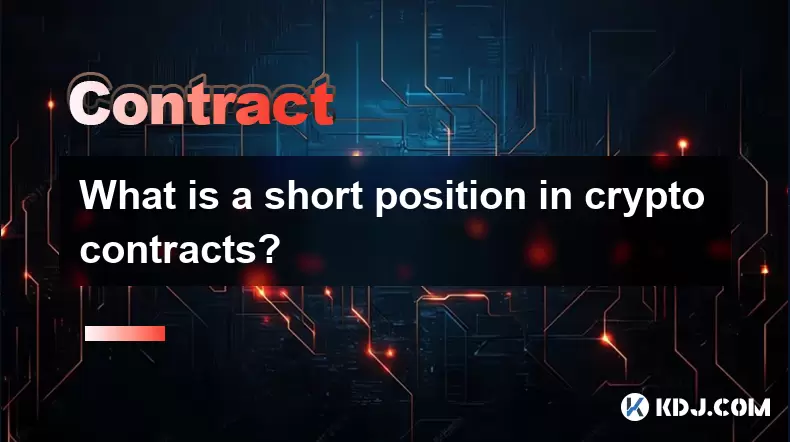
What is a short position in crypto contracts?
Aug 07,2025 at 11:42pm
Understanding the Concept of a Short Position in Crypto ContractsA short position in crypto contracts refers to a trading strategy where a trader prof...
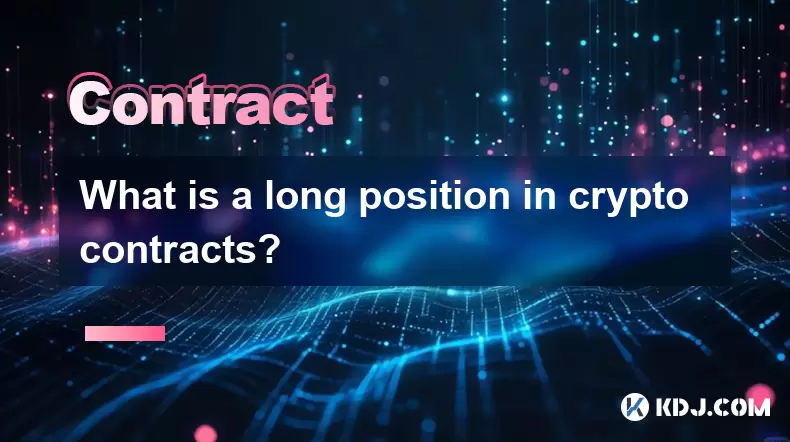
What is a long position in crypto contracts?
Aug 07,2025 at 06:29pm
Understanding the Concept of a Long Position in Crypto ContractsA long position in crypto contracts refers to a trading strategy where a trader buys a...

Why is my Bitstamp futures position being liquidated?
Jul 23,2025 at 11:08am
Understanding Futures Liquidation on BitstampFutures trading on Bitstamp involves borrowing funds to open leveraged positions, which amplifies both po...

What is a straddle in crypto options trading?
Aug 07,2025 at 11:15pm
Understanding the Basics of a Straddle in Crypto OptionsA straddle is an options trading strategy used when a trader expects significant price movemen...

How is the funding rate calculated for perpetual futures?
Aug 07,2025 at 11:36pm
Understanding the Basics of Perpetual FuturesPerpetual futures are a type of derivative contract that does not have an expiration date, allowing trade...

What programming languages are used for smart contracts?
Aug 07,2025 at 06:07pm
Understanding Smart Contracts and Their Execution EnvironmentSmart contracts are self-executing programs deployed on blockchain networks that automati...

What is a short position in crypto contracts?
Aug 07,2025 at 11:42pm
Understanding the Concept of a Short Position in Crypto ContractsA short position in crypto contracts refers to a trading strategy where a trader prof...

What is a long position in crypto contracts?
Aug 07,2025 at 06:29pm
Understanding the Concept of a Long Position in Crypto ContractsA long position in crypto contracts refers to a trading strategy where a trader buys a...

Why is my Bitstamp futures position being liquidated?
Jul 23,2025 at 11:08am
Understanding Futures Liquidation on BitstampFutures trading on Bitstamp involves borrowing funds to open leveraged positions, which amplifies both po...
See all articles

























































































